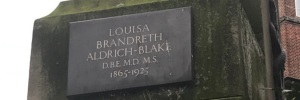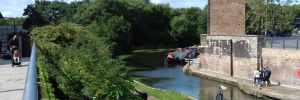Florence Nightingale is credited as the founder of modern nursing. She strived to improve the standards of nursing, notably during the Crimean war. There was something special and extraordinary about Florence Nightingale and here are some facts about her.
1. ‘International Nurses Day’ is on her birthday
International Nurses’ Day is celebrated around the world each year on 12 May, the anniversary of Florence Nightingale’s birth. Her birthday is also celebrated as International CFS (chronic fatigue syndrome) Awareness Day.
Florence Nightingale was named after the city of her birth having been born into a wealthy English family living in Florence, Italy. Her mother was the daughter of a merchant and her father a wealthy landowner. With Florence growing up in a privileged home her parents hosted and attended lavish parties, of which Florence was not a fan.
2. She was an educated and efficient nurse
As she grew up, she realised that nursing was truly her calling. At the age of 16 she told her family of her ambition, which they did not approve of as nursing was considered a lowly job. Nurses before Nightingale’s time, were not what we understand the profession to be now. In the army they were recruited from among the wives and widows of privates and non-commissioned officers. Doctors were always officers. Nurses were paid less than cooks and laundresses, and reported to a sergeant. That did not deter her from following her heart’s desires.
Florence Nightingale’s father oversaw her education, even taught her Shakespearian literature, philosophy, and mathematics. She also studied German, French and Italian, with a smattering of Latin and classical Greek.
After her studies in Germany, Florence Nightingale returned to London to take care of sick governesses; a job she did well, impressing her bosses who promoted her to the position of superintendent. She also volunteered at the Middlesex Hospital where she vowed to improve the hygienic conditions and reduce deaths, at a time when there was a severe cholera outbreak. She is also credited with having taught America’s first trained nurse Linda Richards.
She went against the norms in her time, choosing to work, study and improve nursing and refusing to get married, to the dismay of many. Richard Monckton Milnes is the man whose proposal Florence turned down in 1849. He had been pursuing her for a while but she turned him down saying that she wanted to follow her moral and active nature. She later, in 1850 enrolled at the Institution of the Protestant Deaconesses in Kaiserswerth, Germany.
As well as working for the well-being of ordinary soldiers, Nightingale considered the socio-political conditions that led to war She not only said “I hate war,” but warned about how militaristic institutions led to it. She had so much passion for nursing that she would write letters to the relatives of soldiers who died, to inform them of the sad news. Nightingale worked to turn the workhouse infirmaries into real hospitals. She called for the same quality of care for the well-off to be available to the poor.
“I attribute my success to this – I never gave or took any excuse.” Nightingale
3. She had a vision for the nursing profession
Her vision for the nursing profession included a career path, with increases in salary and responsibility, through the ward sister to the superintendent or matron. She wanted to remove the power hire and discipline nurses from the doctors to superintendent. Moving nurses to be 100% female was an unspoken way to minimise sexual harassment of vulnerable women nurses.
She wanted nursing to be an independent profession. Throughout her life she argued for good salaries and working conditions for nurses, holidays of at least a month per year, decent pensions, good living conditions during training, and hospital design to save nurses’ energy for patient care.
Her report ‘The notes on matters affecting the Health, Efficiency, and Hospital Administration of the British Army’ has pie charts representing different causes of death: red deaths; blue preventable diseases and black other causes. This highlighted the horrifying fact that 16,000 – 18,000 soldiers died of preventable diseases and not their battle wounds. Something needed to be done.
Nightingale’s writing is now available in a 16-volume Collected Works of Florence Nightingale. Much of it is from previously unpublished materials which has now been collected from more than 200 archives worldwide.
4. She was nicknamed The Lady with the Lamp
During the Crimean War when the Allied British and the French forces were fighting the Russian Empire, Florence Nightingale was called in by the Secretary of War, Sidney Herbert to mobilise nurses and head to the war to help the soldiers. She and her nurses arrived at the military hospital to find a horrific sight; it was filthy and was infested with vermin. The soldiers were dying of cholera and typhoid more than their battle-induced injuries. She set to work, at first, setting about cleaning the hospital from top to toe.
During the night, she would walk the corridors of the hospital with an oil lamp, checking in on her patients, hence here she earned the nickname ‘the Lady with the Lamp’ and ‘the Angel of the Crimea’.
A report in The Times says “She is a ministering angel. Without any exaggeration in these hospitals and as a slender form glides quietly along each corridor, every poor fellow’s face softens with gratitude at the sight of her. When all the medical officers have retired for the night and silence and darkness have settled down upon these miles of prostate sick, she may be observed alone with a little lamp in her hand, making her solitary rounds.”
Also the phrase was further popularised by American poet, Henry Wadsworth Longfellow, who wrote a poem dead Sante Filomena in 1857.
“Lo! in that house of misery, A lady with a lamp I see Pass through the glimmering of gloom And flit from room to room.”
By the time the Crimean war ended the hospital’s deaths were reduced by two thirds. She even introduced a library and a classroom at the hospital.
5. She was not a well woman
During her time in Scutari (now Üsküdar), Florence Nightingale contracted the Crimea Fever, a bacterial infection known as Brucellosis. She never really recovered from it; having even been bedridden at the age of 38 and not able to leave her home. For the rest of her life she continued her vocation often from her bed while ill, receiving visitors, being consulted on matters nursing and management of hospitals, and even publishing a book, ‘Notes on Hospital’ at that time. She died in 1910 at the age of 90. She was buried at her family farm in England in a private ceremony, just as she had wanted, though she would have been accorded a national funeral.
6. She was the first woman to be awarded the order of merit
She was recognized by Queen Victoria who presented her with an engraved brooch which became known as the ‘Nightingale Jewel’. She was also awarded £250,000 from the British Government.
In 1883 she became the first recipient of the Royal Red Cross. In 1904 Nightingale was appointed a Lady of Grace of the Order of St John before becoming the first woman to be awarded the Order of Merit in 1907. In the following year she was given the Honorary Freedom of the City of London.
7. She built a training school for nurses
She used the money to set up a new location for St Thomas’s hospital and within it built the Nightingale Training School for Nurses.
Her nursing school opened in 1860. Doctors had university/medical qualifications but women often lacked access to even secondary school education. The Nightingale School started with apprenticeship type of training.
She was also awarded the Order of Merit by Edward VII in 1907 as well as receiving the Freedom of the City of London in 1908, and she received a congratulatory message from King George V.
8. There’s a Florence Nightingale museum
The ‘Angel of Crimea’ has a museum set up for her which houses more than 2,000 artefacts, which depict her life and career as a nurse. The museum is located in the place where the original Nightingale School for Nurses had been built.
9. Florence Nightingale has a blue plaque
Address: 10 South Street, Mayfair, London, W1K 1DE. The original plaque was erected by the Duke of Westminster in 1912 and removed when the house was pulled down in 1929. There is now a new plaque on the rebuilt premises.
Florence Nightingale’s father bought number 10 (formerly 35) South Street for her in 1865. She died there 45 years later. Cecil Woodham-Smith wrote ‘To enter her house was to receive an instant impression of whiteness, order and light’.
She lived there with five servants but spent most all her time in her bedroom, at the back of the second floor, only receiving visitors by appointment.
Nightingale continued her campaigns for reforms by letter, including the improvement of training for midwives and home-nursing for the poor and infirm. Nightingale passed away during the night at her Mayfair home in August, 1910 at the grand old age of 90 years.
When Florence died the international nursing community of the time wished to pay tribute to the life and work of this great nurse. In 1912, The International Council of Nurses (ICN) Congress in Cologne announced the idea of Florence Nightingale Foundation (FNF) to be established as a living memorial to Florence. It was not until the 1929 ICN Grand Council meeting in Montreal that the memorial proposal was activated.
The Florence Nightingale Foundation exists to advance the study of nursing and midwifery practice. It promotes excellence in practice to benefit patients and provides scholarships that enable nurses and midwives to extend their knowledge and skills to meet the changing needs of patients’ care for today and the future.
10. Florence Nightingale has a statue in London
Her statue is on the junction of Lower Regent Street and Pall Mall.
–
To learn more about Florence Nightingale and Mary Seacole, their statues, and other medical women of London, listen to our London History Podcast Episode 13: London Statues of Medical Women.



